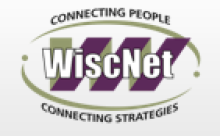AT&T Tells Wisconsin "All Your Tax Dollar Are Belong to Us"
For the rest of the summer, Wisconsin could be the new battleground in the ongoing effort for big companies like AT&T and Time Warner Cable to secure their de facto monopoly positions.
In North Carolina, Time Warner Cable passed a bill effectively preventing communities from building next-generation networks offering services far superior to what TWC offered. Now AT&T and its allies in Wisconsin are trying to stop local governments, universities, libraries, and schools from using a buying coop -- called WiscNet -- to procure better connections than AT&T will provide, at lower prices than AT&T would charge. Why compete when you can outlaw the competition?
WiscNet is essentially a buying coop -- a public/private partnership connecting, among others, University of Wisconsin schools, local governments, libraries, and local public schools. As Barry Orton, Professor of Telecommunications at UW-Madison reminded me, buying coops are "great for buyers, not so great for the sellers."
In this case, sellers like AT&T want to kill the coop so local governments, schools, and libraries, are forced to buy the connections they need from AT&T or other incumbents. This will mean more tax dollars going to AT&T rather than educating students, connecting police stations, and generally allowing public sector institutions to function. From the Wisconsin State Journal:
The motion prohibits the UW System from taking part in WiscNet, the network provider for 450 organizations, including K-12 schools, libraries, cities and county governments.No one has any doubts that AT&T and its allies are squarely behind this measure. To be clear, this has nothing to do with last-mile connections. WiscNet is not providing connections to residents. This is a question of whether local governments can use a network they build and operate collaboratively with other public institutions like UW or whether they have to take whatever AT&T is selling (many small towns only have a single incumbent offering these dedicated access connections).




 The question is why they want faster connections. Only 20% say their current connection completely meets their need to conduct online testing and assessment applications - with another 44% saying it "mostly" meets those needs.
The question is why they want faster connections. Only 20% say their current connection completely meets their need to conduct online testing and assessment applications - with another 44% saying it "mostly" meets those needs.
 These gaps represent a tremendous opportunity for growth - communities should be building their own fiber-optic connections to connect these key institutions and ensure they will have affordable, fast, and reliable connections well into the future. By owning the network, these institutions will have greater control over future costs and their capacity to take advantage of even newer applications.
The FCC should favor locally owned networks to encourage self-reliance instead of never-ending subsidies to private carriers who have little incentive to lower prices and increase investment.
These gaps represent a tremendous opportunity for growth - communities should be building their own fiber-optic connections to connect these key institutions and ensure they will have affordable, fast, and reliable connections well into the future. By owning the network, these institutions will have greater control over future costs and their capacity to take advantage of even newer applications.
The FCC should favor locally owned networks to encourage self-reliance instead of never-ending subsidies to private carriers who have little incentive to lower prices and increase investment.